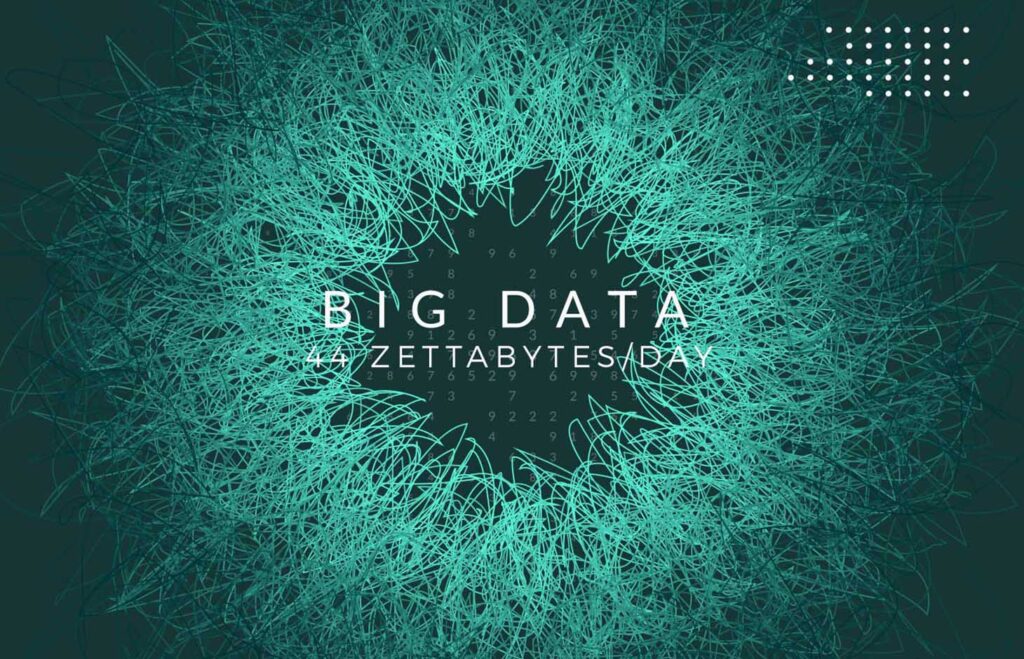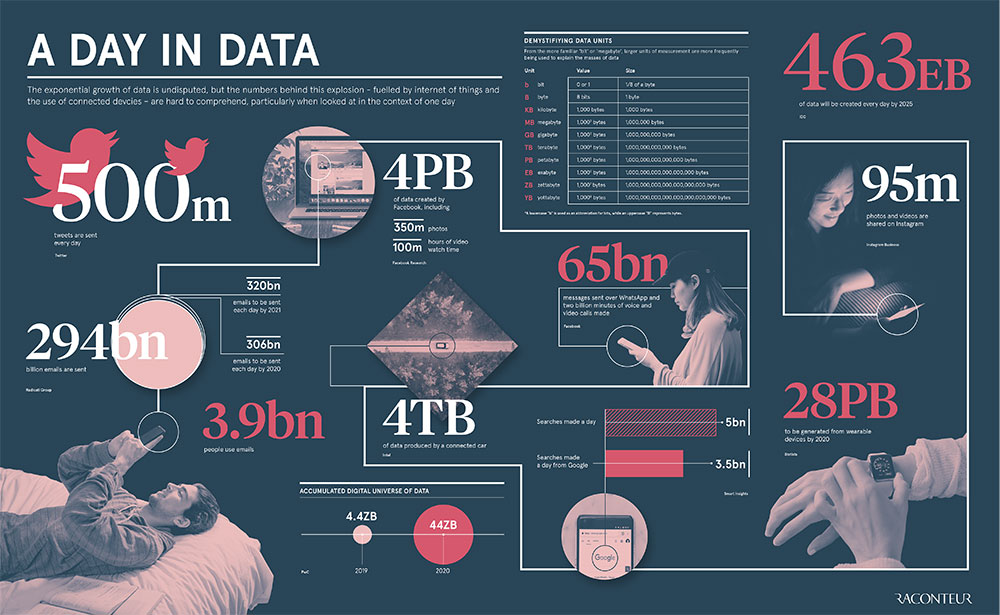No longer a futuristic endeavor, the Internet of Things (IoT) today has reached adoption across multiple business sectors. Intelligent digital connectivity is now a part of many people’s day-to-day lives.
From smartwatches to smart cities, every day a growing number of IoT device and sensor types are rolled out and activated. In fact, there are expected to be more than 41.6 billion IoT devices in 2025, potentially generating $4T to $11T in economic value.
These sensors and hubs collect a nearly incomprehensible amount of data. From our heart rate to the weather, or driving speed to a farm’s projected crop production, it’s getting harder to pinpoint things that aren’t trackable by IoT devices.
The rise of bigger data
Take smart cities, for example. Smart cities combine automotive and smartphone IoT data with their own sensors and hubs to make cities safer, more convenient, and more sustainable.
Several cities worldwide have invested in complex IoT infrastructure to meet these goals.
For example, Nanjing, China installed sensors in 10,000 taxis, 7,000 buses, and 1 million private cars. The Nanjing Information Center centralizes and analyzes the resulting traffic data to send updates to commuters on their smartphones.
Smart streetlights now conserve energy by only illuminating roads when in use, and can alert public works departments when a bulb needs replacing. This is only the beginning.
Smart power grids, public transportation, parking, crosswalks, and even gunshot-locating IoT sensors all do their part to optimize cities for residents and minimize impacts to neighboring areas.
These large data sets, and the ability to analyze them, have come to be known as “big data.”
Many businesses, even non-tech legacy organizations, are leveraging big data to do everything from driving innovations to managing supply chains. PepsiCo, for example, reconciles client inventory reports to forecast production and shipment needs. This allows the business to replenish retailers with the appropriate amount and type of product, at the right time.
We’re at a critical point when it comes to big data, and many businesses are inadequately prepared. Preparation involves creating a data strategy and a data management plan. It also requires implementing or bolstering systems and processes to collect, store, manage, maintain, and protect data.
Businesses must act quickly and position themselves to effectively collect and appropriately leverage the incoming wave, or risk losing a major advantage.
Preparing for the deluge of IoT data
Many data-reliant business sectors are not prepared for the amount of information the IoT will produce in the near future. By 2013, 4.4 zettabytes of digital data had been created. That number is projected to be 44 zettabytes per day by 2020.
Preparing for this data influx is a complex but essential undertaking. Considerations include:
- data source and type
- supporting infrastructure for data storage and processing
- data warehousing and analytics in the cloud
- security, privacy, and fraud prevention
- leveraging data for operational efficiency, insights, and profitability
It’s important to tease out which sets of data can be leveraged for the most impact on your business. It’s impossible to make use of every bit of data available today, and that will remain true in the future. Avoid drowning in the deluge by collecting and focusing only on critical information.
Being selective with data is only the tip of the preparation iceberg. Businesses today must take additional steps or lose the ability to make informed business decisions and plan for the future. Here’s how to get on the ball:
1. Invest wisely in storage systems
Leveraging data requires storing data, whether in a cloud or in-house. Whatever option you choose for your business, be sure to consider what data you need to stay ahead.
Not every piece of information is valuable, and storing unusable data is a waste of resources, which will be needed to weather this disruption. Your business strategy should be the guiding light for the necessary work. Assess what kind of data you need and what you will use it for first, then consider options.
2. Define a data strategy and data management plan
A large part of your data-informed strategy will need to center around security and privacy risk. Collecting and using customer data can lead to exponential growth, but it comes at a cost.
Diligent data governance requires considerations for data quality, security, and privacy and ownership issues. Transparency and ethical data use are, and will continue to be, in the spotlight. So much so, in fact, that governments are beginning to enforce business data security and privacy practices by law.
3. Prepare your business team
There’s no way to hide this data revolution from your team, so it’s time get proactive to avoid surprises. To this end, understanding data governance will go a long way.
The IoT is about connectivity, and about building trust. How can you integrate both of those things into your business? The answer likely lies in educating your team about good data management.
In-house workshops and meetings can complement and build upon a well-informed and talented data team.
While data gathering and processing have become simplified in recent years, businesses run into trouble when they don’t truly grasp the details of how that work is accomplished, and how data is managed. This strengthens the case for hiring data scientists.
Without a deep understanding of data management, decision-makers aren’t informed enough to make appropriate choices to ensure businesses are prepared. Combat this with informed culture and data education.
4. Choose your data sources carefully
One of the biggest challenges when managing multiple data sources is identifying a single source of truth (SSOT), where accurate, real-time data about all facets of the business can be found.
For many businesses, customer relationship management (CRM) platforms like Salesforce appear, at first glance, to be that source. Upon deeper inspection, however, a problem becomes apparent: data in CRM platforms can be easily altered by anyone with access to them, potentially undermining the integrity of that data.
While there are good reasons for this flexibility in CRM, it isn’t an ideal situation for businesses and their customers seeking an accurate SSOT from the revenue perspective.
For many data-driven businesses, in fact, a billing system operating on incoming data and updating it in real time serves as both a robust SSOT and financial system of record. Adaptive billing systems collect and manage abundant, accurate data in real-time, and make it available to all business departments.
One thing is for sure: the IoT disruption is here, and with it comes a previously unprecedented wave of big data. Its visibility is growing even in the agricultural and industrial sectors, meaning that if it hasn’t affected your business yet, you can likely expect to see it soon.
Businesses which properly prepare can harness the power of this wave. This will fuel more opportunity and innovation. Those which do not will likely be left behind.








